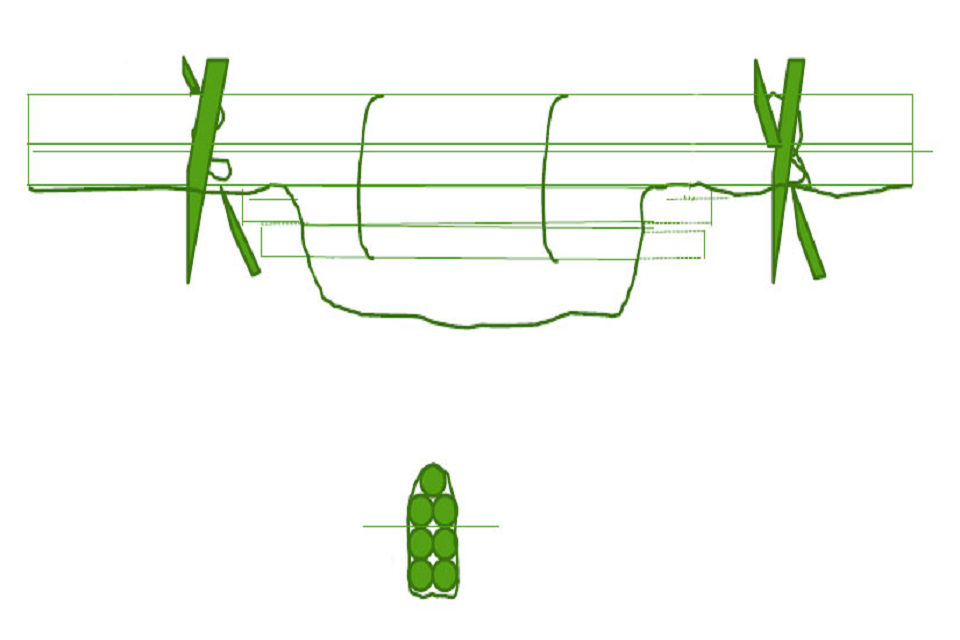Annex 5: Capital Items RP32 and RP33: Small & Large Leaky Woody Dams (Further Information)
Published 24 February 2021
Applies to England
Find out more information about capital Items RP32 and RP33: Small and large leaky woody dams
1. Capital Items RP32 and RP33: Small & Large Leaky Woody Dams
If you are considering an application that includes capital items RP32 or RP33 you can apply for a separate standalone capital item PA2: Feasibility Study to get support before you apply. This will help to make sure the RP32 and RP33 are designed and located correctly for flood risk management.
To get this standalone capital item (PA2) you need written permission from Natural England. You can find more information on GOV.UK at: PA2: Feasibility study.
2. RP32 and RP33: Small and Large Leaky Woody Dams
For capital items RP32 and RP33 you will receive a fixed amount.
| Capital item | Amount per dam |
|---|---|
| RP32: Small Leaky Woody Dam | £461.39 |
| RP33: Large Leaky Woody Dam | £764.42 |
3. Where to use these items
You can only use these items:
- in catchments targeted for flood risk measures
- for dams in streams and river channels between 1m and 2.99m (RP32) and between 3m and 5m (RP33)
- where approved by the Environment Agency or Lead Local Flood Authority
You can find more information and guidance on GOV.UK at:
4. Indicative Design for Leaky Woody Dams
4.1 Small leaky woody dam (RP32) - 1m to 2.99m wide
Indicative design for 1 to 3 metres wide, leaky woody dam
- A cross section view of a 3 log high woody dam shows the arrangement of the stacked logs – 2 logs at the base with another 2 logs directly on top of them. The final log is at the top of the log stack, positioned in the dip between the 2 logs below it. Ground level is shown as being between the second row of logs from the bottom and the top log.
- The base of the lower logs is positioned at mid-point between the channel bed and bank top, to permit the unhindered passage of low-medium flows and fish. There is scope for adjusting the size of the lower gap to maximise the effectiveness of the dam in relation to critical flood flows.
- The lower logs are slotted 50cm into the bank on either side of the channel or braced against a bankside tree or stump. There are 2 rows of logs installed for added strength, one behind the other.
- The top log is positioned on top of bank and extends 3 to 4 metres out onto either side of the floodplain to enhance flood water storage
- The top log is secured into place using cross stakes driven into the ground and wired together. Bundle of 5 logs also fixed together with wire.

4.2 Large leaky woody dam (RP33) – 3m to 5m wide
Indicative design for 3 to 5 metres wide, leaky woody dam
- A cross section view of a 4 log high woody dam shows the arrangement of the stacked logs – 2 logs at the base with another 2 logs directly on top of them, then another 2 logs directly on top of those. The final log is at the top of the log stack, positioned in the dip between the 2 logs below it. Ground level is shown as being between the second and third row of logs from the bottom.
- The base of the lower logs is positioned at mid-point between the channel bed and bank top, to permit the unhindered passage of low-medium flows and fish. There is scope for adjusting the size of the lower gap to maximise the effectiveness of the dam in relation to critical flood flows.
- The lower logs are slotted 50cm into the bank on either side of the channel or braced against a bankside tree or stump. There are 2 rows of logs installed for added strength, one behind the other.
- The top 2 logs are positioned on top of bank and extend 5 to 6 metres out onto either side of the floodplain to enhance flood water storage. There are 2 rows of logs used at ground level for added stability.
- The top 2 logs are secured into place using cross stakes driven into the ground and wired together. Bundle of 7 logs also fixed together with wire.

